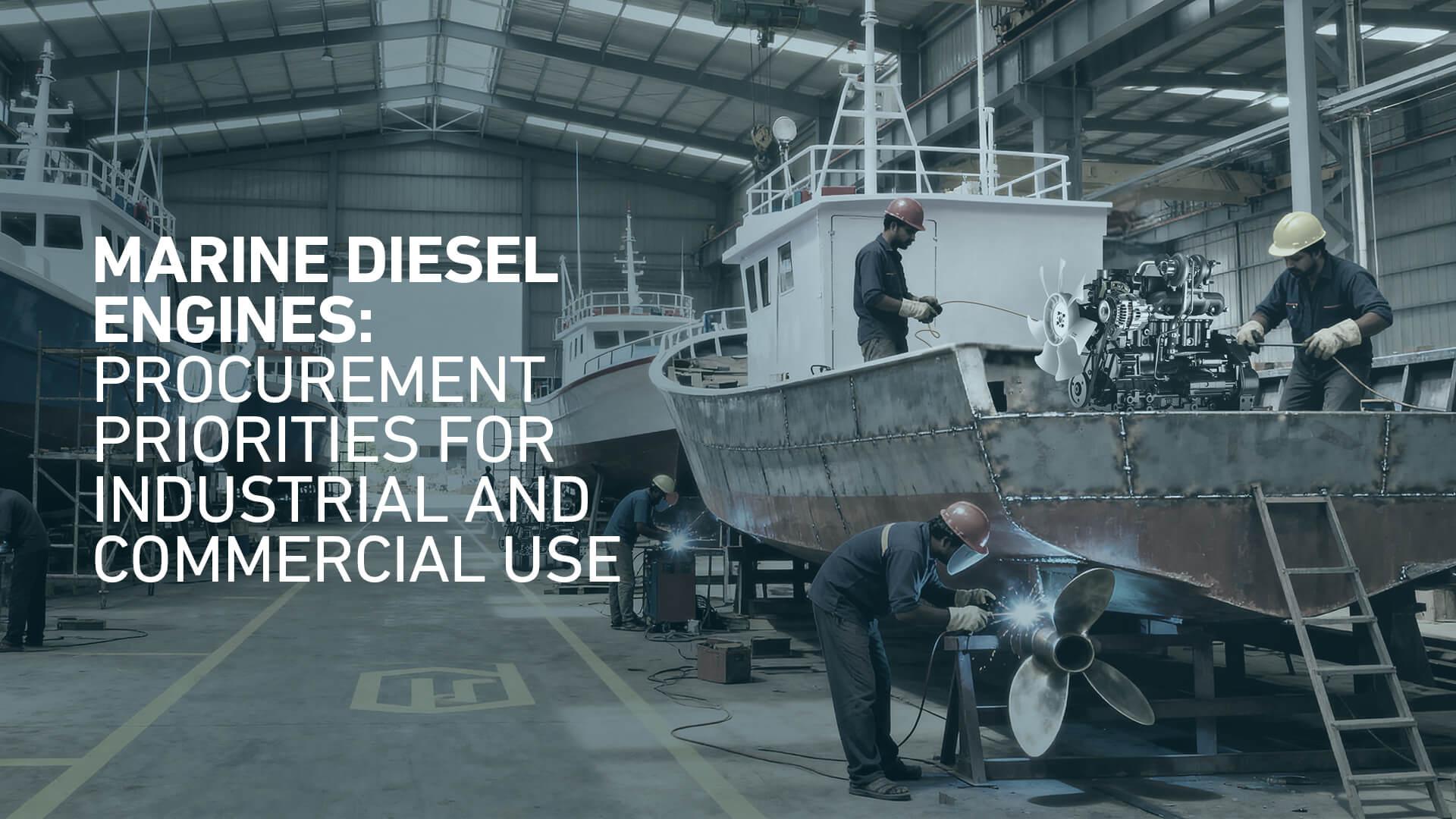Marine Diesel Engines: Procurement Priorities for Industrial and Commercial Use

Purchasing a marine diesel engine is a significant investment that requires careful attention to detail. This complex task involves numerous technical, operational, and regulatory factors. Making the right choice is essential for ensuring operational efficiency, cost-effectiveness, compliance, and long-term reliability. Below are key priorities to guide decision-makers in the selection process, presented as a list of important points.
Procurement Priorities for Industrial & Commercial Use
Here are some of the points to consider before purchasing a marine diesel engine for industrial or commercial use.
1. Understanding Application Requirements
- Check the specific operational environment:
Marine engines endure constant vibrations due to the movement of ships over the sea waves. Additionally, they operate in an environment that is consistently salty and moist. Marine engines must withstand harsh, corrosive conditions and operate reliably well in a varying marine environment.
- Define the vessel’s purpose:
Different vessels like cargo ships, fishing boats, ferries, and offshore platforms have distinct power, endurance, and efficiency requirements.
- Calculating required power output:
Calculating engine horsepower and torque according to specific requirements is essential. This ensures the engine is neither under- nor overspecified for the vessel size.
-
2. Technical Specifications & Performance:
- Prioritize corrosion resistance:
Corrosion resistance must be the topmost priority while procuring marine diesel engines, as it is essential for marine engine wear and failure.
- Evaluate cooling systems:
Marine engines require extensive cooling. Your engine must have a robust cooling system, which is usually a combination of raw (seawater) and fresh water, often in a closed loop configuration, preventing the engine from getting overheated.
- Consider engine type:
You can choose between 2-stroke & 4-stroke engines. 4 stroke engines are generally more fuel-efficient and environmentally friendly.
- Check fuel efficiency:
Fuel efficiency is critical for long-haul operations, as fuel costs can account for up to 50% of total shipping expenses.
- Assess engine size & weight:
Make sure your engine’s compatible with vessel space and weight constraints to maintain stability and performance.
3. Compliance and Environmental Considerations
- Meet emission standards:
Engines must adhere to international (IMO Tier III) and regional regulations regarding sulfur oxides (SOx) and nitrogen oxides (NOx) emissions.
- Opt for advanced emission controls:
Some modern engines may feature exhaust gas cleaning systems or be compatible with low-sulfur fuels to meet stringent standards.
4. Brand Reputation and Manufacturer Support
- Choose reputable brands:
Choose trusted brands that are known worldwide for their superior engine quality, like MVDE.
MVDE is India’s leading marine diesel engine manufacturer. Since 2008, MVDE has been a trusted name in the manufacturing of high-performance diesel engines. Renowned for our exceptional quality and engineering excellence, we deliver powerful, reliable engines that consistently outperform the competition.
- Evaluate after-sales support:
Access to service points, spare parts, and technical support is essential for minimising downtime and ensuring long-term functionality.
- Consider warranty and post-purchase support:
Comprehensive warranties and training improve investment protection and operational reliability.
Cost Considerations and Value Analysis
- Analyse the total cost of ownership:
Consider the purchase price, fuel efficiency, maintenance costs, repair expenses, depreciation rate, and potential resale value.
- Compare new vs. used engines:
New engines feature cutting-edge technology and comprehensive warranties, though they come with a higher initial investment.
Used or remanufactured engines are typically more cost-effective and often readily accessible; however, they necessitate a meticulous review of maintenance records and rigorous reliability testing.
- Evaluate cost-saving features:
Innovations like turbocharging and common rail fuel injection can improve fuel efficiency by up to 15%, reducing operating costs over time.
Maintenance and Operational Longevity
- Prioritise ease of maintenance:
Engines designed with easily accessible components and comprehensive service manuals contribute to minimising downtime and reducing labour costs.
- Regular fuel testing and treatment:
Test periodically for contaminants and use additives to prevent overheating and corrosion.
- Plan for routine inspections:
Plan regular maintenance to monitor the engine’s performance, noise levels, and operational handling.
Procurement Process Best Practices
Warranties:
Ensure all warranty terms are clearly stated, covering duration, parts, labour, and exclusions. This will protect you from unexpected repair costs and ensure accountability from the supplier.
Service Agreements:
Request detailed service contracts outlining maintenance intervals, response times, and the scope of after-sales support.
Compliance Certifications:
Verify and collect all necessary documentation proving that the engine meets maritime regulatory requirements (e.g., IMO, EPA).
Installation Documentation:
Ask for signed installation and commissioning reports to confirm proper setup and system integration.
Amendments and Change Orders:
Any changes to specifications or pricing are documented and signed off by both parties to avoid disputes.
Secure All the Documents:
Maintain digital and physical copies of all documents for easy reference during audits, maintenance, or resale.
By focusing on these procurement priorities, industrial and commercial buyers can acquire marine diesel engines that deliver optimal performance, meet regulatory requirements, and provide long-term value for their operations.




